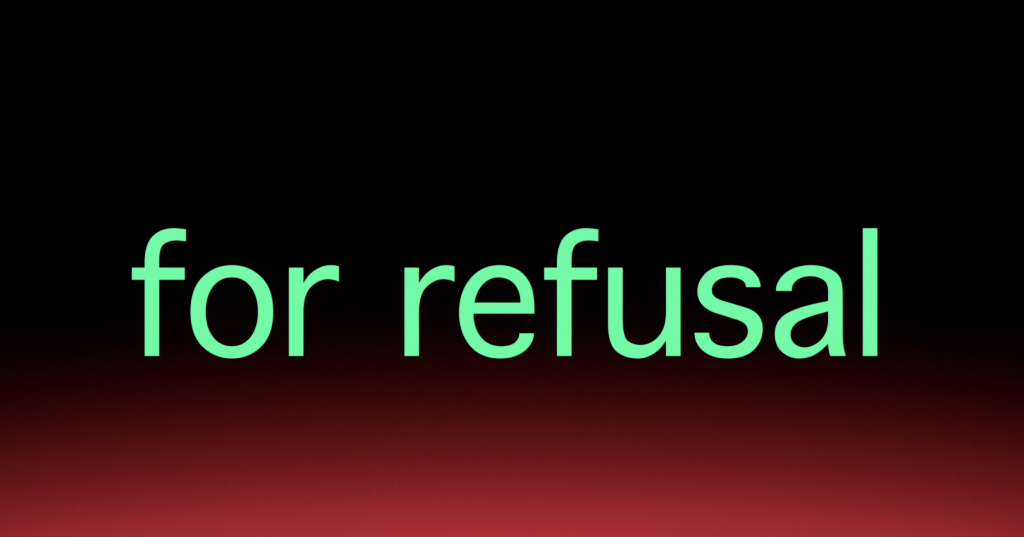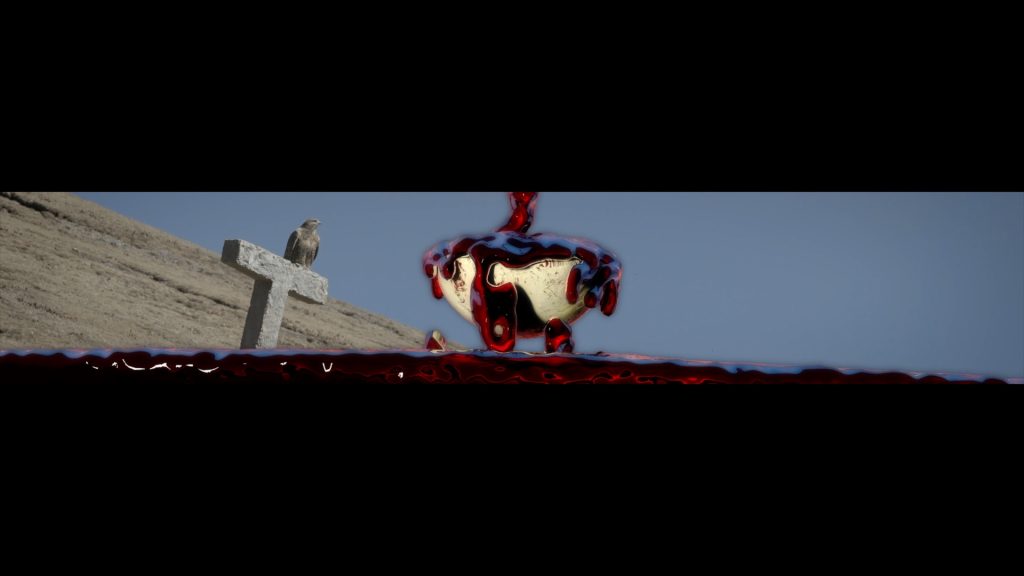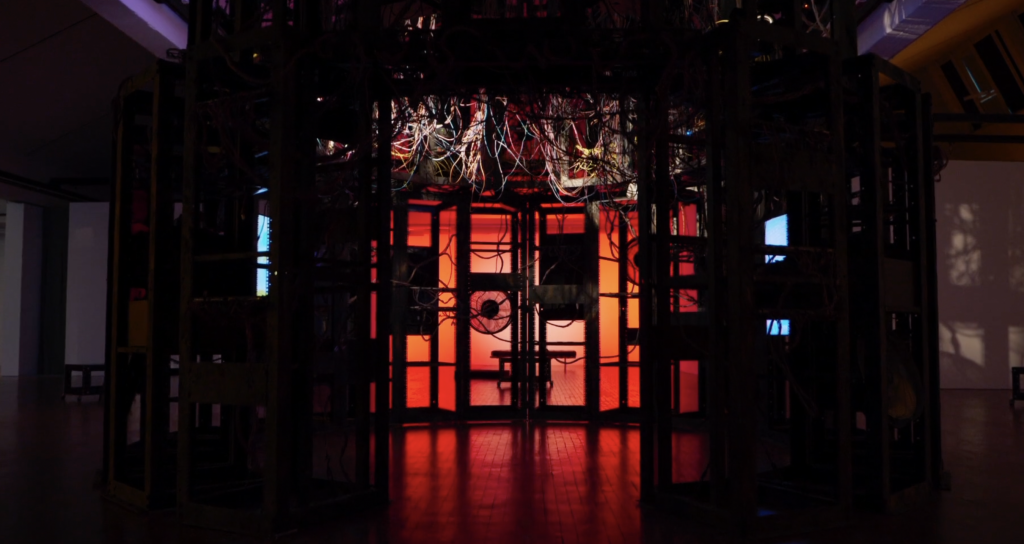Text by Piotr Bockowski

As hygiene obsessed restrictions paralysed German cultural institutions two years ago, transmediale curators decided to deconstruct the mass-congestion format of their global festival. Animated by an intention to avoid mere reduction to a flatline of computer screen simulations available online only, a programme that expanded a whole year throughout 2021 and 2022, where transmediale moved away from the usual acceleration of simultaneous Berlin shows, packed into a month.
Instead, they underwent a process of dispersion into smaller offline and online events and exhibitions, distributed across an entire year. The curatorial aim become to re-invent Transmediale as “a little bit more local, a little bit more accessible” not only through the multiplicity of spread out, intimate situations, led by a variety of different artists’ concepts and research practices but also by an emphasis on a prolong and open-ended processes behind unfinished pieces.
Expositions at transmediale.studio presented not actual films but documentations of making of films that are yet to be made. Berlin’s Kunst Akademie displayed mind maps of civilizational failures alongside glossaries of possible transhuman languages not yet spoken and 3D-generated vehicles to underworlds still to be invented, or props for imaginary catastrophes – summarised by the theme abandon all hope ye who enter here, which presented the DUST video by Tianzhuo Chen that inspired the meditative focus and permeating aura of obsolescence of the year-long last edition of transmediale.
The curators tell that Rendering Refusal, the exhibition that inaugurated their for refusal, aone year-long project, was setting the focus and the intentions. They wanted to explore tactics for refusal and their capacity for hope, as well as socio-political realities that challenged the status quo: It was about the possibilities that can emerge from positions of no. In contrast, in the closing exhibition, abandon all hope ye who enter here, we explored the limitations and leveraging of hope, its relation to damage and how the kinds of technological presents and futures that computation creates can be rejected. Our aim with this concluding part of the research was to recognise how we live with damage and how to position ourselves within it.
The two exhibitions were also aesthetically related to one another in terms of the exhibition design, which was designed by Sebastian Kite. In the first exhibition, the team wanted to create a feeling of navigating between worlds, so we used reflective vinyl flooring combined with led lighting that changed colours to create a sense of passing time. In the second one, they reused all these elements not only to keep the same aesthetic line but also for reasons of sustainability. Accessibility and art mediation was a top priority throughout the whole project.


In parallel, while exploring the socio-political potency of refusal tactics during the pandemic, transmediale was dangerously aligned with activist movements of Liberation Hong Kong protesters against biotech totalitarianism of the Chinese Communist Party, which viciously weaponised covid lockdowns against adolescent online gamers who themselves turned into grassroots communities of urban guerrilla. Hong Kong youth refused to participate in a communist society of extremely centralised surveillance by performing the most dramatic acts of repeated paralyses of city infrastructure. Their fierce resistance as means to protect local self-determination can be perceived as a political undertone of transmediale strategy for the times of the hi-tech pandemic.
During the period of the last transmediale, earlier in 2022, most global media were promoting the idea of “self-isolation” in order to tackle the spread of the infection. Many humans locked themselves in their homes in front of their computer screens. This is arguably the greatest media event involving the Internet so far. It certainly focuses on the relation of mass (media) technologies to the intimacy of microbial life within our bodies.
The virus originated in China and allegedly spread all over the planet within less than three months. To begin with, the spread of the virus couldn’t have been possible without the global industrial infrastructures, mostly produced in China and shipped worldwide. The virus likely spreads through cargo transports as well as via humans using aeroplanes, cars, ships and trains.
Rapid transportation is a twin of rapid communication. Both technologies are developing together as their operations are intertwined in their efforts to control industrial production. Thus, the virus pandemic is not only “announced” online but is essentially an effect of the Internet and the technological infrastructures that were instrumental in establishing it. The Internet and other infrastructural mediations are the virus in more than one way.
Open-ended and spilling over modus operandi of the last transmediale contested global ideologies of fast-paced productivism and accelerationism by allowing to appreciate cultural formats of slow performances, local low-key events and creative processes that don’t have to be completed. Curators shifted the focus from commodified or otherwise defined art pieces towards the transitory life of materials that were re-used for different installations.
Wider accessibility methods were enabled via a VR system to accompany the limited access to physical events. Introducing a novel sense of intimacy, at the same time, transmediale didn’t ignore the issues of precarious living on the margins of our civilization. Those were inventively encapsulated within fragile ceramic shells, containing electronic devices with access to journal reports on crisis tactics for compromised coexistence.
For the transmediale team, the exploration of refusal has been as understood as a messy multifaceted complex practice that works across different scales and temporalities. After the year-long exchange with many different activists, artists and researchers, they recognise it as a long and difficult practice that can be supported through understanding and different acts of solidarity.






